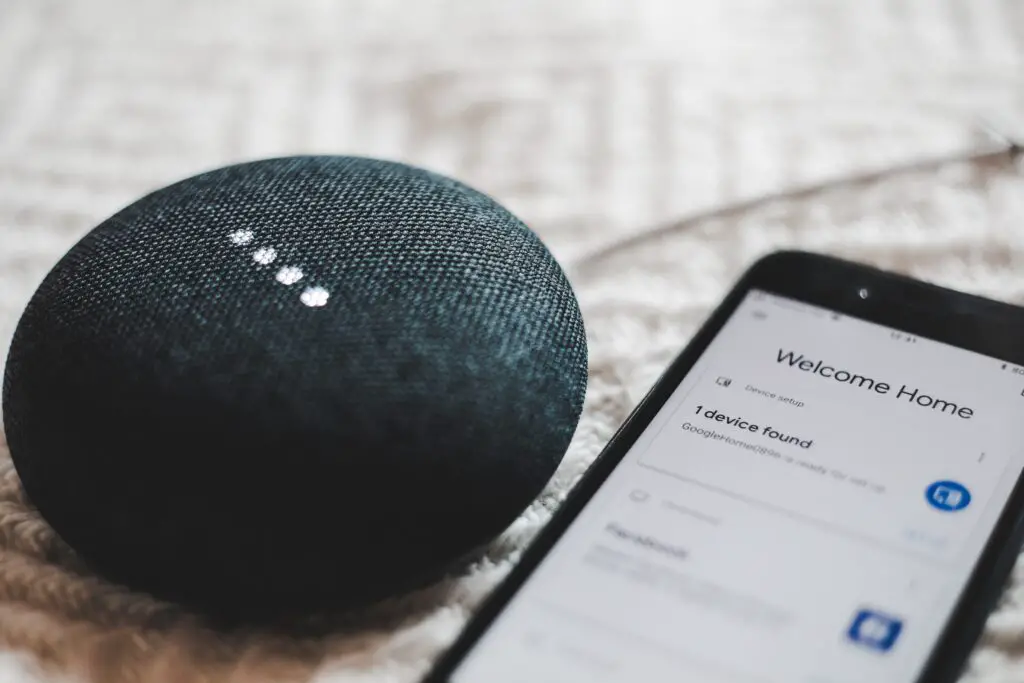Our homes are evolving into smart, interconnected ecosystems, making our lives more convenient, efficient, and secure. This transformation is driven by a wide array of innovative gadgets designed to enhance every aspect of our daily routines. Welcome to the world of top gadgets for a connected home, where technology meets modern living!
What is a Connected Home?
A connected home, often referred to as a smart home, is a living space equipped with various devices and systems that can be remotely controlled and automated. These devices communicate with each other and with you through the internet, creating a seamless and efficient living environment. From controlling your lights with a voice command to securing your home with smart locks, the possibilities are endless.
Why Embrace Connected Home Gadgets?
The rapid advancement of technology has brought about gadgets that not only make our lives more convenient but also increase energy efficiency and security. Imagine being able to adjust your thermostat while away from home or monitoring your front door through your smartphone. These gadgets are not just about luxury; they can save you time, money, and provide peace of mind.
In this comprehensive guide, we’ll explore the top gadgets that can transform your ordinary home into a connected haven. From smart speakers and thermostats to security cameras and home entertainment systems, we’ll delve into the world of home automation and connectivity.
1. Smart Speakers and Voice Assistants

Smart speakers are the gateway to voice-controlled home automation. These devices are equipped with built-in voice assistants like Amazon Alexa or Google Assistant, allowing you to control various smart devices in your home with simple voice commands.
Smart speakers act as the central hub for your connected home. They can answer questions, play music, set reminders, and control other smart devices.
Popular Smart Speakers: Amazon Echo, Google Nest, Apple HomePod
Smart speakers bring your home to life with voice-activated control. You can use them to:
- Control lighting and thermostats.
- Play music and podcasts.
- Get weather updates and news.
- Set timers and reminders.
- Make hands-free phone calls.
Pro Tip: Ensure compatibility with other smart devices to fully harness the potential of your smart speaker.
2. Smart Thermostats
Smart thermostats are designed to optimize your home’s heating and cooling systems. They learn your preferences and adjust temperature settings automatically, saving energy and money.
Smart thermostats can significantly reduce your energy bills while keeping your home comfortable. Some benefits of thermostats include;
- Energy Efficiency: They adjust heating and cooling based on your schedule.
- Remote Control: Change settings from your smartphone.
- Cost Savings: Save money on heating and cooling bills.
Popular Smart Thermostats:
Nest Thermostat: Known for its learning capabilities, it creates a personalized schedule for your home.
Ecobee Smart Thermostat: Features room sensors for precise temperature control and energy savings.
3. Smart Lighting
Smart lighting systems enable you to control the brightness, color, and scheduling of your lights. They can be operated via apps or voice commands.
Smart lighting adds ambiance, convenience, and energy efficiency to your home.
Advantages of Smart Lighting:
- Automation: Set schedules and scenes.
- Energy Savings: Dim or turn off lights when not needed.
- Voice Control: Control lights with voice commands.
Top Brands in Smart Lighting:
Philips Hue: Offers a wide range of bulbs, light strips, and accessories.
LIFX: Known for its vibrant, color-changing bulbs with no hub required.
4. Smart Security Cameras
Smart security cameras provide real-time monitoring of your home. They offer features like motion detection, two-way audio, and cloud storage.
Protect your home and loved ones with 24/7 surveillance and remote access. Some features and capabilities of smart security cameras include;
- Motion Alerts: Receive notifications on your phone.
- Remote Viewing: Check camera feeds from anywhere.
- Cloud Storage: Store video footage securely.
Notable Smart Security Camera Manufacturers include;
- Ring: Offers a range of indoor and outdoor cameras with easy installation.
- Arlo: Known for wireless cameras with excellent battery life and advanced features.
5. Smart Home Hubs

Smart home hubs serve as the central command center for all your connected devices. They help devices communicate and work together seamlessly. They simplify control by centralizing device management.
How Hubs Centralize Control:
- Connect and control multiple devices from one app.
- Create automation routines.
- Enhance security by centralizing access control.
Examples of Popular Smart Home Hub Devices:
- Samsung SmartThings: Compatible with a wide range of devices and offers robust automation capabilities.
- Hubitat Elevation: Known for local processing, ensuring reliability even without internet access.
6. Smart Locks
Smart locks provide convenient and secure access control to your home. You can lock and unlock doors remotely using a smartphone app. Enhance home security and grant access to trusted individuals without physical keys.
Benefits of Smart Locks:
- Remote Access: Lock or unlock doors from anywhere.
- Keyless Entry: Eliminate the need for physical keys.
- Guest Access: Provide temporary access codes.
Notable Smart Lock Manufacturers:
- August Smart Lock: Offers retrofit solutions for existing deadbolts.
- Schlage: Known for its robust and stylish smart lock options.
7. Home Entertainment Systems
Smart home entertainment systems transform your living room into a cinematic experience. They include smart TVs, streaming devices, and sound systems. Elevate your entertainment experience with streaming, voice control, and immersive sound.
Components of a Connected Home Entertainment Setup:
- Smart TVs: Access streaming apps and control with voice commands.
- Streaming Devices: Like Roku or Apple TV.
- Sound Systems: Soundbars and home theater setups.
Leading Brands in Smart Home Entertainment:
- LG OLED TVs: Known for their stunning picture quality and thin design.
- Sonos: Offers premium sound quality and multi-room audio capabilities.
8. Wearable Gadgets and Their Role
Wearable gadgets like smartwatches and fitness trackers can be integrated with your connected home ecosystem to enhance automation and convenience. They provide personal data and control at your fingertips.
Examples of Wearable Gadgets:
- Smartwatches: Monitor your home from your wrist.
- Fitness Trackers: Track health and home automation stats.
- Contribution to Overall Home Connectivity: Wearables offer quick access to your smart home apps and notifications.
Challenges and Considerations

1. Security and Privacy Concerns
Connected homes raise concerns about data security and privacy. Ensure you:
- Use strong, unique passwords.
- Keep firmware and apps up to date.
- Review and understand privacy settings.
2. Compatibility Issues
Not all devices work seamlessly together. Verify compatibility before adding new gadgets to your smart home.
3. Cost Considerations
Investing in a connected home requires budgeting for both devices and potential subscription fees.
Future Trends in Connected Home Gadgets
Upcoming Innovations and Technologies
The future of connected homes is promising. Anticipate:
- More AI-driven automation.
- Integration of 5G for faster connectivity.
- Enhanced energy efficiency solutions.
Conclusion
As our lives become increasingly digital, the integration of top gadgets for a connected home is transforming the way we live, work, and play. From smart speakers that respond to our every command to security cameras that keep us safe, these gadgets offer unmatched convenience and control.
Embrace the connected home revolution and take the leap into the future of modern living. Whether you’re starting small with a smart speaker or diving headfirst into a fully automated home, the possibilities are endless. Elevate your home’s connectivity today and experience the magic of a truly smart home.
Frequently Asked Questions
1. What Gadgets Are There in a Smart Home?
In a smart home, you can find a wide range of gadgets, including smart speakers, thermostats, lighting systems, security cameras, smart locks, home entertainment systems, and wearable gadgets like smartwatches and fitness trackers. These devices are designed to enhance automation, convenience, and security in your home.
2. What Is the Best Home Assistant?
The best home assistant often depends on your personal preferences and ecosystem. Popular options include Amazon Alexa, Google Assistant, and Apple Siri. Consider your device compatibility, preferred voice commands, and other factors when choosing the right home assistant for your needs.
3. What Are Home Gadgets?
Home gadgets, also known as smart home devices, are electronic devices and systems designed to enhance the functionality, convenience, and automation of a home. These gadgets can be controlled remotely via a smartphone app, voice commands, or automation routines. Examples include smart speakers, thermostats, lighting systems, and security cameras.
4. How Can I Improve My Home with Technology?
You can improve your home with technology by integrating smart home gadgets and systems. Start by identifying your specific needs and preferences. Then, choose devices like smart speakers, thermostats, and security cameras that align with your goals. Install and set up these devices, and use their features to enhance convenience, energy efficiency, and security in your home.
5. How Do You Make Your House a Smart House?
To make your house a smart house, follow these steps:
- Identify your needs and goals for automation and connectivity.
- Choose compatible smart devices such as smart speakers, thermostats, lighting systems, and security cameras.
- Install and set up these devices according to the manufacturer’s instructions.
- Connect the devices to a central hub or use a smartphone app for control.
- Create automation routines and voice commands to customize your smart home experience.
- Regularly update firmware and security settings to ensure the safety and efficiency of your smart home.
6. Which Technologies Are Currently Used in Households?
Several technologies are commonly used in households today:
- Wi-Fi and high-speed internet connections for connectivity.
- Smartphones and tablets for communication and control.
- Smart speakers and voice assistants for voice-controlled automation.
- Smart TVs and streaming devices for entertainment.
- Smart thermostats and lighting systems for energy efficiency.
- Security cameras and smart locks for home security.
- Wearable gadgets like smartwatches and fitness trackers for personal monitoring and control.
These technologies are integrated to create modern, connected homes.



